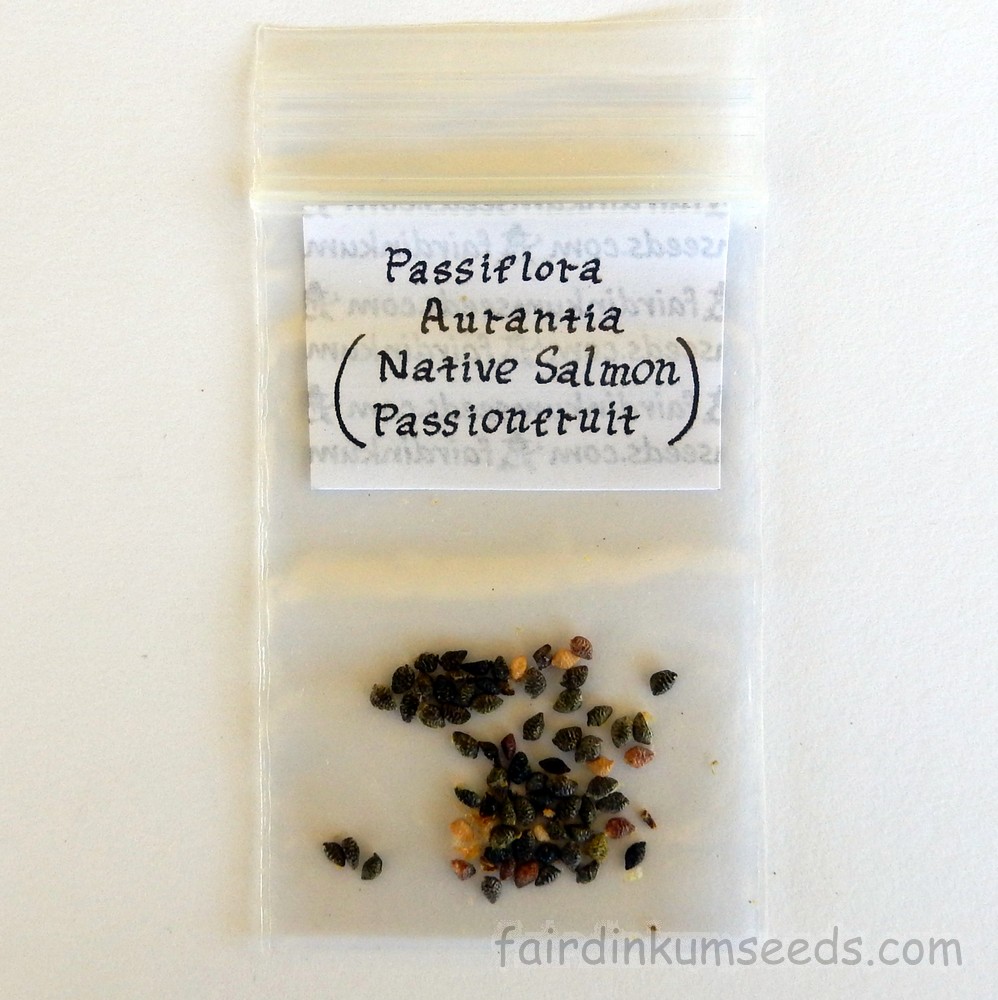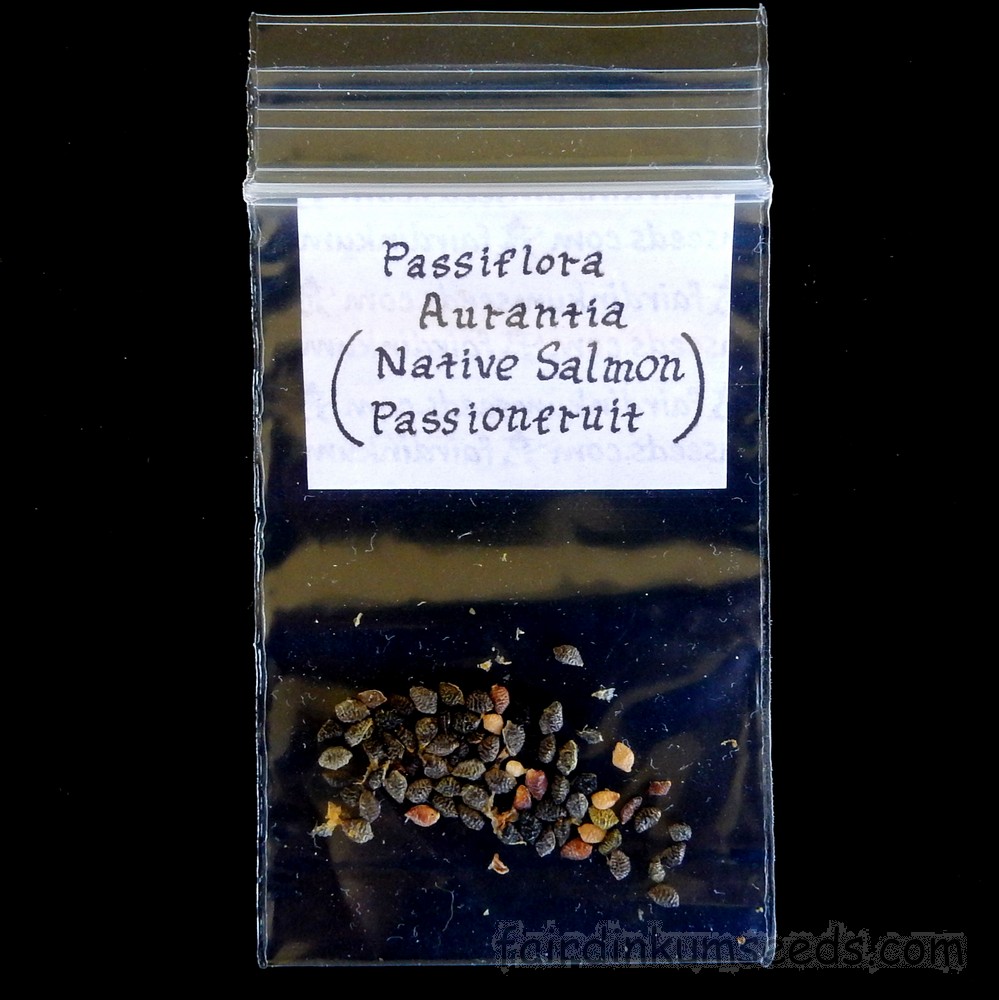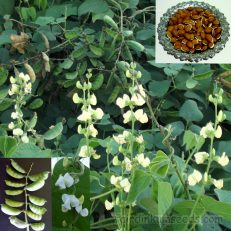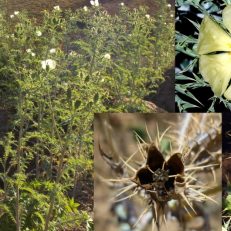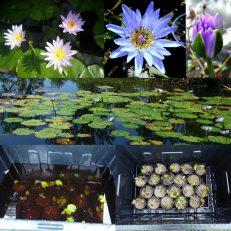Please read text!
Native Salmon Flowered Passionfruit Passiflora Aurantia Seeds
Pack of 25+ very rarely available seeds!
Very hard to find amazing coloured native passionfruit.
Though visually similar to Passiflora aurantia var. samoenensis, this Aussie species, Passiflora aurantia var. aurantia, has glands near the top of the petiole.
This particular one has red flowers not burnt orange as seems to be more commonly encountered.
Awesome cream ruffles that unwind into the most amazing salmon coloured flower ever. As the days go on it darkens up to a deep crimson red.
It is perfect for pots, and if you wind it around itself, the whole plant will only take up half meter of space.
On a trellis in good fertile soil it will spread out much more, and when planted at the base of Acacia species as companion plant, they cover the bushes with flowers and provide a real splash of colour for the times when the Acacia are not blooming.
I love this species so much that we had a full row of them, before the big Bundy floods….
Several hundred of these plants alone, ended up washed into the dam, and it has taken me all these years to get enough to want to share them with you guys again.
It isn’t because they are hard to grow or anything, it’s because of the bloody king parrots and wallabies, and because I am may be a little disorganized from time to time…
Not to worry, got that sorted now!
It does great in full sun or nearly total shade, and has a natural distribution that includes Queensland, New South Wales, New Guinea and the Pacific islands.
Provided you protect it from really heavy frosts, and excessive heat, it can grow happily just about everywhere in Oz, and anywhere else for that matter.
I have sold a lot to collectors all over the world, especially to Germany, UK and USA and back in the day when we were only selling it in “Mixed Passiflora species” pack on eBay, I saw three of our seeds resold at auction for 68Euro plus postage!
Quite the mark up!
I also must warn you, BE VERY CAREFUL WHEN BUYING THIS SPECIES ANYWHERE ELSE!!!
Just this week I found four dodgy bastards using our pictures and descriptions to defraud folks on eBay, Etsy and a USA based store/blog.
I haven’t had the time to check but there are no doubt many more, especially Chinese based stores with Australian and USA sounding names that often illegally bulk import on their behalves, then repackage and redistribute the seeds to customers.
Be wary of Australian flags, fancy borders around images, large gallery themes, stores also selling electronics, knives, gadgets, and Ozzie sounding names on eBay especially.
I am certain that the actual seeds they delivery are just common supermarket passionfruit, Passiflora edulis or the very weedy Passiflora caerulea.
This hurts our website sales heaps, but also destroys the trust of folks when they spend a couple years thinking they are growing something unique, only to find they could have bought it for ~$10 a kilo at their local supermarket.
It is also a very profitable scam.
Just one of the sellers using our stolen images and text had allegedly sold this species more than 3,200 times at $8 a pack for 10seeds.
That’s $25 grand(or a couple years income for us) and all it took was a few kilos of supermarket passionfruit and a quick copy paste of our intellectual property.
To just collect that many seeds of this species would be a full time job so there is no way the seeds were legit, even if you ignore the lack of morals the seller exhibited by stealing from us, and the fact they were allegedly in the UK(but more likely Chinese based wholesalers with UK based redistribution networks).
If you ever see any of our images or text used elsewhere please send me an email so I can ask them to remove it and report them to the hosting site.
It helps us, and it also protects the gardening community, because if you can’t take a picture of the alleged rare species you are selling, then 99.999% of the time it means you don’t actually sell it, you ripping folks off sending some other crap instead.
This means you are getting stolen from, and also being put at risk of prosecution for illegal importation or propagation.
Most of the species used in these substitution scams are mislabeled common weeds, prohibited to import and grow.
The fines for customers caught importing and growing these species are huge, thousands of $.
Seed fraud is a million dollar industry, it sucks for everyone except the bastards doing it.
I personally reckon it is important that we all do our bit to stop it!
Anyway, enough about the endless stream of dodgy bastards, on to the fruit!
It tastes great, but not really anything like a passion fruit you get in the shops.
The fruit ripen with a green skin, and the the flesh has a mild tanginess, but lower acid, and a sort of funky roasted garlic flavour that I really like.
The flesh is white instead of yellow or orange, and the seeds are tiny and sort of pointed at both ends. About a third as big as normal.
Very different in size and shape to the standard imported passion fruit species.
Unlike all the more common species this native fella produces flowers and fruit all year round here, even in winter.
Just keep the water up to them and give them the odd feed with a bit of compost or manure.
Just a pinch, don’t over do it.
It has flowers and fruit on pretty much all the time, all at different stages, and even the dark glossy leaf looks cool I reckon!
Now the internet will tell you it grows reliably from seeds which don’t require any pre-treatment, and that is technically true.
But, please note that the germination itself is erratic as this is an totally undomesticated wild species.
It hasn’t had hundreds of generations of selection to standardise it, and as such it quite often takes a couple months to pop if the seeds are super fresh like mine always are.
Old seeds(which we don’t sell) often germinate faster as the germination inhibiting chemicals have had time to break down and leach out.
Just the nature of the beast.
It is worth the wait, and provided you use a nice sandy well draining soil and keep it moist the majority will come up eventually, normally when the weather changes.
I’m sure that, just like any other Passiflora species, you could speed the process up to a couple weeks, just by carefully thinning the shell, as happens naturally in the wild.
The King parrots love them(cheeky bastards!) and I find a lot of seedlings under parrot roosts.
I guess it’s a harsh journey through a parrots gut, so that no doubt speeds up germination.
You could soak it in orange juice over night, or bleach for a couple minutes, or even run a few experiments using GA3 or Smoked vermiculite.
You could rub the seeds on the concrete, in sand, or generally roughen and scarify the seed coat, but I never do, as I just see no need.
Nature knows best I reckon, and I’m not in a big hurry.
These are good fresh seeds, and they will grow, when they are ready.
Trust me, they are well worth waiting for!
Grown by us organically (and sometimes wild harvested locally), no chems, no nasties, no problems!

